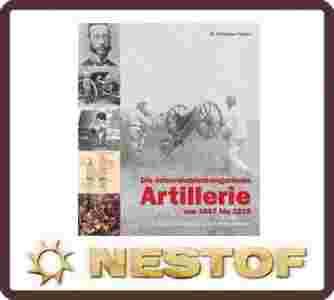OPIS
Przedmiotem aukcji jest monografia jednostek
artyleryjskich armii
austrowęgierskiej 1867 - 1918. Łącznie 640
stron, bogato ilustrowane ponad 1200 zdjęciami.
Książka w twardej oprawie, dodatkowo w obwolucie. Poniżej przykładowe
strony z
książki.
Autorzy: Dr. M. Christian Ortner
ISBN: 978-3-9[zasłonięte]02526-0 (wersja
niemiecka)
lub 978-3-9[zasłonięte]02526-7 (wersja angielska)
Waga: 3,44 kg
Dane Techniczne: 640 stron, ponad 1200
kolorowych zdjęć, łącznie ze współczesnymi fotografiami
i ilustracjami, zszyte w twardej oprawie. Format: 29.9 x 26.0 cm.
•
Publikacja wydawnictwa Verlag Militaria, wysoko
cenionego wśród kolekcjonerów i hobbystów
• Książkę wysyłamy w terminie
14 dni
od zaksięgowania wpłaty lub 20 % przedpłaty w
przypadku pobrania.
• Po zakupie proszę o informacje którą
wersję językową wysłać!
OPIS ANGLOJĘZYCZNY
Over the
period from 1867 to 1918 the Austro-Hungarian
artillery experienced major changes both in
technical and organizational terms. Proceeding from
the muzzle-loader of the ‘Battery of the Dead’ at
the Battle of Sadowa in 1866, the artillery was
continuously modernized and evolved from the M 1875,
M 1880 and M 1899 systems to barrel recoil artillery
and finally the massed guns of the First World War.
A total of 637 pages and more than 1,200 photographs,
design sketches and illustrations, sometimes
published for the first time, demonstrate not only
the appearance and design principles of the more
than a hundred artillery models introduced over this
period, but also numerous prototypes and
contemporary foreign artillery systems. Tables and
organizational charts describe the structures and
organization of the artillery at different times and
plans and descriptions explain firing methods and
artillery tactics in detail. Colour illustrations of
the types of Austrian ammunition employed in the
First World War round off the picture. The author of
the book, Dr. M. Christian Ortner, is the Director
of the Heeresgeschichtliches Museum in Vienna.
OPIS NIEMIECKOJĘZYCZNY
Die
österreichisch-ungarische Artillerie erfuhr im
Zeitraum von 1867 bis 1918 sowohl in technischer als
auch in organisatorischer Hinsicht bedeutende
Veränderungen. Ausgehend vom Vorderladergeschütz der
„Batterie der Toten“ in der Schlacht bei Königgrätz
1866 wurde die Artillerie kontinuierlich
modernisiert, entwickelte sich über die Geschütze
M.1875, M.1880 und M.1899 hin zur
Rohrrücklaufartillerie und schließlich zur
Massenartillerie des Ersten Weltkriegs. Auf
insgesamt 637 Seiten und mehr als 1.200 teilweise
erstmals veröffentlichten Fotos, Skizzen und
Abbildungen zeigt das Buch nicht nur Aussehen und
Konstruktionsprinzipien der mehr als hundert
eingeführten österreichischen Geschütze, sondern
auch zahlreiche Prototypen sowie das zeitgenössische
ausländische Artilleriematerial. Tabellen und
Organisationsschemas beschreiben die Gliederung und
Organisationsstruktur der Artillerie in den
einzelnen Zeitabschnitten. Planskizzen und
Beschreibungen erklären im Detail Schießverfahren
und Artillerietaktik. Anhand von Farbdarstellungen
werden die während des Ersten Weltkriegs verwendeten
österreichisch-ungarischen Munitionssorten im Detail
besprochen. Der Autor des Buches, Dr. M. Christian
Ortner, ist Direktor des Heeresgeschichtlichen
Museums in Wien.
GALERIA
[Kliknij na zdjęcie żeby powiększyć]




| | |

